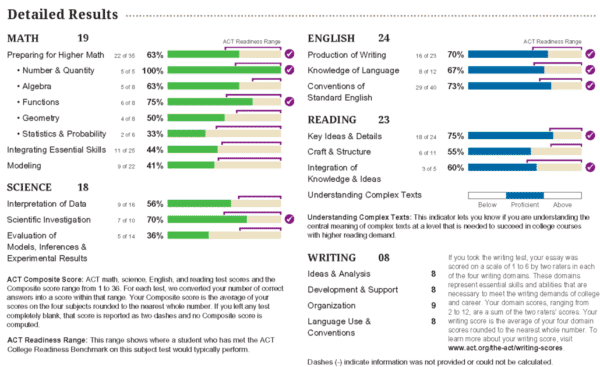
Mastering a Key ACT Test Subject: Preparing for the English Section
How to Prepare for the ACT Test Subject in English
The ACT test subject for the English Section evaluates two main areas: Usage and Mechanics, and Rhetorical Skills. To succeed, you need to focus on both grammar rules and critical thinking. Using tools like Varsity Learning Tools for a free diagnostic test can help you identify your strengths and weaknesses in the English Section. Then, you can build a customized study plan tailored to your needs, improving your chances to score well on the ACT.
ACT English Section Content Overview
About half of the questions in the ACT English Section test your grammar and punctuation skills. These questions may vary in difficulty, but by eliminating wrong choices one at a time, you can manage your time effectively. Besides grammar, the ACT English Section also tests your understanding of literary elements, making it essential to prepare for both parts of this ACT test subject.

ACT English section tests two broad content areas
The ACT English section consists of about 50 percent grammar questions. These questions are similar, but some of them are harder than others. In fact, you may even struggle to remember rules and equations. So if you’re able to eliminate one answer choice at a time, you’ll find it much easier to complete the entire section in the time allowed. In addition, the ACT English section also tests two areas of literature.
Taking note of ACT English section questions will ensure you’re prepared. One tip is to answer each question sentence by sentence. This will eliminate unnecessary reading, allowing you to focus on answering grammar and punctuation questions. On the other hand, you may want to take the time to carefully consider the broader context of a passage before answering a question. Listed below are some tips for tackling the ACT English section:
The ACT English section tests your knowledge of grammar and rhetoric. Questions will test your ability to use punctuation and commas correctly, as well as the rules of sentence construction. Generally, you should have a good understanding of the rules of grammar and punctuation. You can also take advantage of free test strategy classes offered by the ACT. They’ll give you an idea of the kind of questions you can expect on test day and help you score better.
Key Strategies for the ACT English Section
Answering ACT English Section questions sentence by sentence helps reduce unnecessary reading and keeps your focus on grammar and punctuation. However, sometimes considering the passage’s overall context is important to answer rhetorical questions accurately. Preparing for this ACT test subject means mastering both detailed grammar skills and broader rhetorical analysis.
Understanding Usage, Mechanics, and Rhetorical Skills
The ACT subjects test English includes five passages with 15 questions each, and a multiple-choice section on usage and mechanics, rhetorical skills, and organization. Questions are divided into three sections: Usage/Mechanics, which assesses how well students can use grammar and punctuation in sentences, and Rhetorical Skills, which requires critical thinking and decision-making.
A student who is confident in their grammar and punctuation will likely pass the ACT English section. ACT English tests grammar rules, sentence structure, and punctuation. Although most high school students have a good understanding of these concepts, the test will test your ability to use them properly. The test may be difficult, but practicing for this area will make the process more fun and rewarding.
The Usage and Mechanics section is easier to study. Most questions ask you to follow specific rules and examples. You will have to memorize the rules and practice, while the Rhetorical Skills section asks you to analyze an author’s style, reasoning, and purpose. Practice are the best ways to succeed in both sections. Useful strategies will help you succeed on the ACT.
The Literary Narrative in the ACT English Section
The Literary Narrative section of the ACT Reading Test is always the first passage you’ll encounter on the test. This section contains published literary works – from modern fiction to excerpts from classic novels. Reading a wide variety of different fiction pieces is the best way to prepare for the reading section of the ACT. It will give you a better understanding of the characteristics of the genre. You can also reference the passages for clarifications and help with the answers.
Questions on the Literature Subject Test focus on the overall tone and style of a literary work. They also measure your ability to identify the main theme and tone of the work, as well as its tone and meaning. In addition, you’ll be asked about characterization and cause-and-effect relationships in the piece. For instance, if a piece of literature is set in the Middle Ages, the passage may contain references to the French Revolution.
The ACT reading section includes 40 multiple-choice questions, which assess your understanding of the material. The questions also sometimes involve the reading of two passages in a section. ACT reading section questions are broken down into three sub-sections: key details and ideas, craft and structure, and knowledge integration. Key details and ideas questions make up 55-60% of the entire test. These questions ask you to interpret details, while craft and structure questions focus on the word use and organization of the text.
